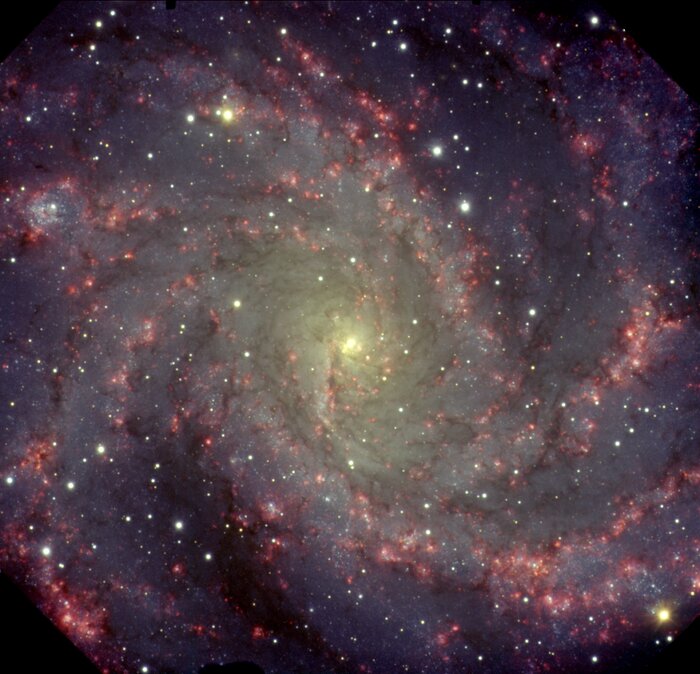NGC 6946 “Fireworks Galaxy”
NGC6946, the “Fireworks Galaxy,” lies between 10 and 20 million light-years away on the border between the constellations of Cepheus and Cygnus, and was discovered by Sir William Herschel (1738-1822) on September 9, 1798. It continues to fascinate astronomers, who estimate that it contains about half as many stars as the Milky Way. They often use it to study and characterize the evolution of massive stars and the properties of interstellar gas. As viewed in the new Gemini optical image, we see only the “tip of the iceberg” of this galaxy. Its optical angular diameter is about 13 arcminutes, but viewed at radio wavelength at the frequency of neutral hydrogen (1420 Mhz or 21-cm line), it extends considerably more than the angular diameter of the Moon. This Gemini North Gemini Multi-Object Spectrograph (GMOS) image of NGC6946 utilizes a selective filter specifically designed to detect the radiation emanating from the starbirth regions. Additional filters help to distinguish other details in the galaxy, including clusters of massive blue stars, dust lanes, and a yellowish core where older more evolved stars dominate.
Credit:International Gemini Observatory/Travis Rector, University of Alaska Anchorage
About the Image
| Id: | noao-ngc6946 |
| Type: | Observation |
| Release date: | June 30, 2020, 9:33 p.m. |
| Size: | 2392 x 2304 px |
About the Object
| Name: | Fireworks Galaxy, NGC 6946 |
| Constellation: | Cygnus |
| Category: | Galaxies |
Wallpapers
Coordinates
| Position (RA): | 20 34 52.32 |
| Position (Dec): | 60° 9' 8.78" |
| Field of view: | 5.81 x 5.60 arcminutes |
| Orientation: | North is 183.9° right of vertical |
Colors & filters
| Band | Wave-length | Tele-scope |
|---|---|---|
| Optical g | 475 nm | Gemini North GMOS-N |
| Optical r | 630 nm | Gemini North GMOS-N |
| Optical i | 780 nm | Gemini North GMOS-N |
| Optical H-alpha | 655 nm | Gemini North GMOS-N |

